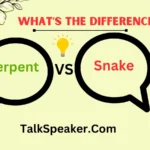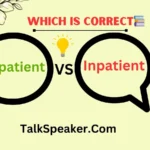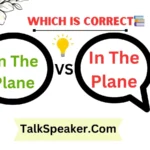Expressing gratitude is more than just a social nicety—it’s a vital aspect of human interaction that strengthens relationships and fosters positive environments. One common phrase people use to show their appreciation is “Thank you very much.”
But is this phrase always appropriate? How does it fit into different contexts, and are there more effective ways to express thanks? This comprehensive guide will explore the nuances of saying “Thank you very much,” its impact on relationships, and the best practices for expressing gratitude in various settings.
The Impact of Expressing Gratitude in Interpersonal Relationships
Expressing gratitude is fundamental to building and maintaining strong interpersonal relationships. It not only shows appreciation but also reinforces social bonds. Here’s how expressing thanks positively affects relationships:
- Strengthens Bonds: Gratitude helps to reinforce the connection between individuals by acknowledging and appreciating their efforts. For example, a simple “thank you” after a favor or kind gesture can enhance the relationship between friends or colleagues.
- Promotes Positive Emotions: Saying thank you can boost the mood of both the giver and receiver. This mutual positivity can create a more supportive and harmonious environment.
- Encourages Repeat Behavior: When someone feels appreciated, they are more likely to continue their positive behavior. For instance, a thoughtful thank you note to a team member can encourage them to keep up their good work.
Understanding the Nuances of “Thank You” in Different Contexts
Casual vs. Formal Settings
Gratitude expressions can vary significantly between casual and formal settings. Understanding these differences can help you choose the most appropriate way to say thanks.
- Casual Contexts: In informal settings, such as with friends or family, “Thank you very much” can be a friendly and sincere way to show appreciation. However, you might also hear variations like “Thanks a ton” or “I really appreciate it.”
- Formal Contexts: In professional or formal settings, “Thank you very much” is often used to convey politeness and respect. For example, in a business email or a formal letter, this phrase can add a touch of professionalism and courtesy.
Professional Environments and Gratitude
In a professional setting, expressing gratitude appropriately can enhance workplace relationships and contribute to a positive work culture.
- Professional Email: When sending a thank you email after a job interview or meeting, phrases like “Thank you very much for your time” or “I appreciate your consideration” can leave a good impression.
- Workplace Interaction: During meetings or collaborative projects, acknowledging someone’s contributions with a “thank you” can foster teamwork and mutual respect.
Personal Interactions: Expressing Sincere Thanks
In personal relationships, the authenticity of your gratitude matters most. Here’s how to express sincere thanks:
- Specificity: Being specific about what you’re thankful for can make your gratitude feel more genuine. For example, “Thank you very much for helping me move last weekend; I couldn’t have done it without you” is more meaningful than a general “thanks.”
- Personal Touch: Adding a personal touch, such as a handwritten note or a small gift, can enhance the sincerity of your thanks.
The Etymology of “Thank You Very Much” and Its Evolution
The phrase “thank you very much” has evolved over time. Here’s a brief look at its history:
- Origin: The phrase combines “thank you,” which dates back to Old English as “þancian,” meaning to express gratitude, with “very much,” an intensifier that emphasizes the level of appreciation.
- Evolution: Over the years, the phrase has become a standard way to express deep gratitude. Its use has broadened across various contexts, from casual to formal.
Is “Thank You Very Much” Overused? Exploring Alternatives
While “thank you very much” is a common expression of gratitude, it can sometimes feel repetitive or insincere. Here are some alternatives that might be more effective:
- “I’m really grateful”: This phrase conveys a deep sense of appreciation.
- “I truly appreciate it”: Adds a layer of sincerity and depth.
- “Your help means a lot to me”: Highlights the impact of the assistance received.
When to Use Other Expressions of Appreciation
Choosing the right expression of thanks depends on the context. Here are some examples:
- For Formal Occasions: “I deeply appreciate your assistance” or “Thank you for your kind support.”
- For Informal Situations: “Thanks a lot” or “You’re the best!”
The Role of Tone in Thank You Messages
Tone plays a crucial role in conveying the sincerity of your gratitude. A positive and genuine tone enhances the effectiveness of your message.
- Warm Tone: A warm and friendly tone can make your gratitude feel more heartfelt. For instance, “Thank you very much for your help; it really made a difference” sounds more genuine than a monotone “Thank you.”
- Professional Tone: In formal contexts, a respectful and courteous tone is important. For example, “Thank you very much for considering my application” maintains professionalism while expressing appreciation.
The Grammatical Correctness of “Thank You Very Much”
The phrase “thank you very much” is grammatically correct. It follows a straightforward structure:
- “Thank you” is the main expression of gratitude.
- “Very much” acts as an intensifier, emphasizing the level of thanks.
Common Misconceptions
- Grammatical Misconceptions: Some might question if “thank you very much” is too redundant or formal. However, it remains a widely accepted and grammatically sound way to express gratitude.
Conveying Authentic Emotion: “Thank You Very Much” vs. “Thank You So Much”
Both “thank you very much” and “thank you so much” are used to express gratitude, but they carry slightly different connotations:
- “Thank You Very Much”: Often used to convey a more formal or intense level of gratitude. It can sometimes feel more structured and reserved.
- “Thank You So Much”: This phrase can feel more casual and personal, often used in informal contexts or to express a deep emotional response.
Situations for Preference
- Formal Setting: “Thank you very much” might be preferred for professional interactions.
- Informal Setting: “Thank you so much” could be more appropriate for personal or casual situations.
The Influence of Intensifiers in Gratitude Expressions
Intensifiers like “very” and “so” modify the strength of your gratitude expression. Here’s how they impact the message:
- “Very” adds a level of formality and can be used to emphasize deep appreciation. For instance, “Thank you very much for your detailed feedback” sounds more formal.
- “So” is more casual and can convey a more personal or emotional level of thanks. For example, “Thank you so much for your understanding” feels warmer and more personal.
Connotation and Denotation in Saying Thanks
Understanding the difference between connotation and denotation helps in choosing the right expression of gratitude.
- Denotation: The literal meaning of the phrase. For “thank you very much,” the denotation is a strong expression of gratitude.
- Connotation: The emotional or implied meaning. “Thank you very much” may carry a formal connotation, while “thanks a lot” might seem more casual.
How Different Expressions Are Perceived
- Formal Phrases: “Thank you very much” and “I appreciate it” are often perceived as more polite and respectful.
- Informal Phrases: “Thanks a lot” and “You’re awesome” can be seen as more relaxed and friendly.
Making Every “Thank You” Count: Tips for Meaningful Acknowledgements
To make your gratitude more impactful, consider these tips:
- Be Specific: Clearly state what you’re thankful for. Specificity adds sincerity.
- Add Personal Touches: Personalized notes or small gestures can enhance the impact of your thanks.
- Timeliness: Express thanks promptly to ensure the gesture is fresh and relevant.
Examples of Thoughtful Acknowledgements
- In a Professional Setting: “Thank you very much for your prompt response to my request. Your assistance is greatly appreciated.”
- In a Personal Setting: “Thank you so much for the lovely gift. It’s exactly what I needed, and it means a lot to me.”
Conclusion
Understanding the nuances of expressing gratitude helps in choosing the most appropriate way to say thanks. Whether you use “thank you very much,” “thank you so much,” or another phrase, the key is to convey your appreciation sincerely and appropriately for the context. By paying attention to the setting, tone, and specificity of your gratitude, you can enhance your interactions and strengthen your relationships.
Incorporating thoughtful expressions of thanks not only acknowledges the efforts of others but also fosters a positive and respectful environment. So next time you express your gratitude, choose the words and tone that best fit the occasion, and make every “thank you” count.

As an experienced English teacher, I’m Jessica Thompson, here to make grammar and vocabulary simple and fun. Join me on TalkSpeaker as we explore the language together, one lesson at a time!



